Portugal
This road trip takes you to Portugal. The country is known for its pleasant climate, friendly people, beautiful landscape, lovely beaches, delicious food and is a true surfer's paradise. Plus, it's a country you can easily drive through with a campervan, car or motorbike. The roads are good and there are many cheap and sometimes even free places to stay. All the ingredients are there for a successful road trip!
We start in the Douro Valley and then head down south to the Algarve. We'll drive past beautiful vineyards, picturesque villages, lively old towns, beautiful coastlines and great beaches. Don't forget your surfboard for this trip!
Total distance of the route: 1108 km
Douro Valley
We start our road trip in the Douro Valley. The Douro is also called the Golden River and originates in Spain. From there, it flows further to the North-East of Portugal to join the Atlantic Ocean at Porto. This beautiful river is the perfect base for your road trip, although you will breathe in and out quite a bit as you drive the narrow, winding roads. We'll follow the Douro's north bank, but there's also plenty of beauty to be discovered along its south bank, starting from the Miradouro de Penedo Durão viewpoint, where vineyards and olive groves grow over the rugged hills.
We follow the river as closely as possible and pass quiet towns and villages such as Torre de Moncorvo, Vila Flor, Carrazeda de Anciães until we reach Peso da Régua - the centre of port production.
We stop regularly at beautiful vineyards that follow the contours of the terrain, at castles that were part of the defensive line during the Christian Reconquest, and make many small stops to admire the surrounding landscape.
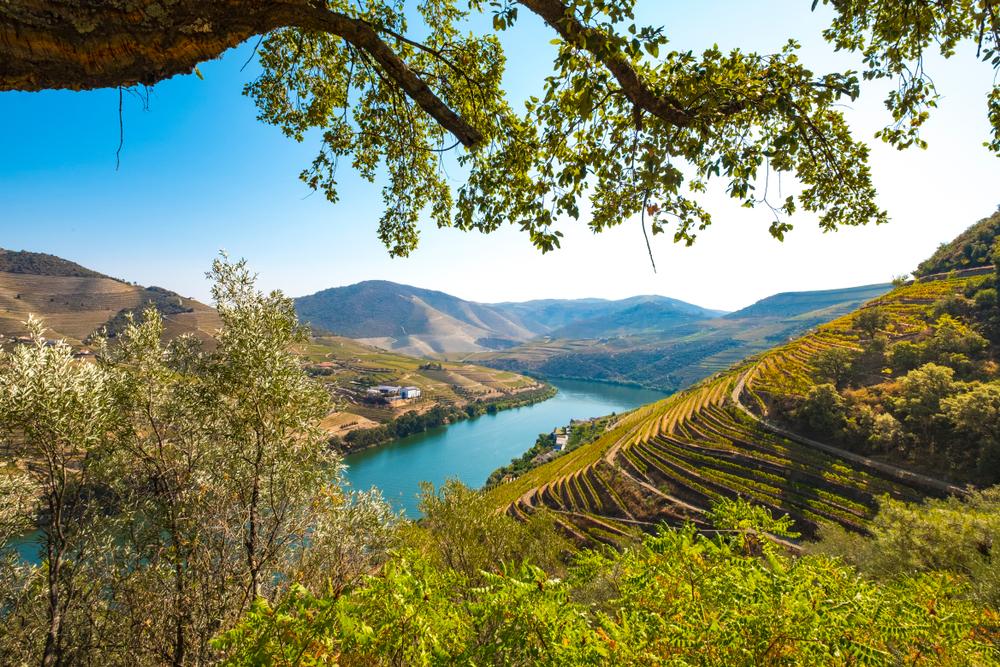
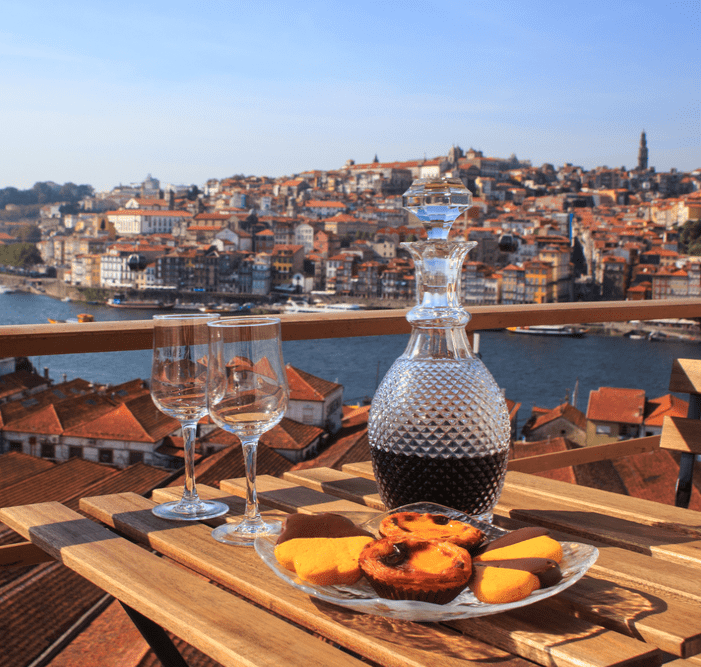
Porto
Just before Porto, we stop in Vila Nova de Gaia. Porto is known for its port and red Douro wine. In Vila Nova de Gaia, the port wine is stored for maturation in the cellars. You can learn more about the wine and, as you should, taste this drink of the gods. The bridge Ponte Dom Luis connects Vila Nova de Gaia with Porto. From the bridge you have one of the most beautiful views of the city. After Lisbon, it is the largest city in Portugal. So there is a lot to see. We decide to explore the city centre on foot. Most streets in Porto look like the setting of a romantic film. Especially when you walk through the streets in the Cais da Ribeira district, it is like walking through an idyllic postcard. We visit the Mosteiro da Serra do Pilar. The monastery has been included in the UNESCO World Heritage List and is an architectural highlight of the city. The church is situated on a hill and is inspired by the Santa Maria Redonda church in Rome.
Coimbra
From Porto, we drive further south to the city of Coimbra. The city is situated on the banks of the Mondego, but is best known for its university, which is located on the higher part of the city. The university is the oldest in Portugal and one of the oldest in Europe. Walking along the Pátio das Escolas you will be overwhelmed by the large, 13th century buildings. To escape the burning sun, we also visit the chapel, library and the main hall of the university.
In the lower town of Coimbra, there are many buildings that bear witness to the heyday of Romanesque art in Portugal. A must see is the monastery Mosteiro de Santa Cruz. Here you will find the tomb of the first king of Portugal: Afonso Henriques. Coimbra is still a lively student city where you can go shopping or enjoy a terrace.
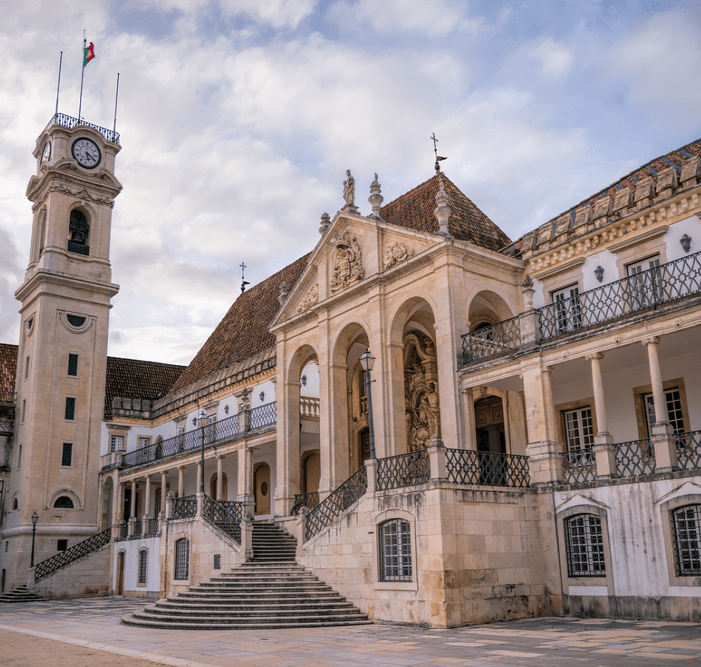
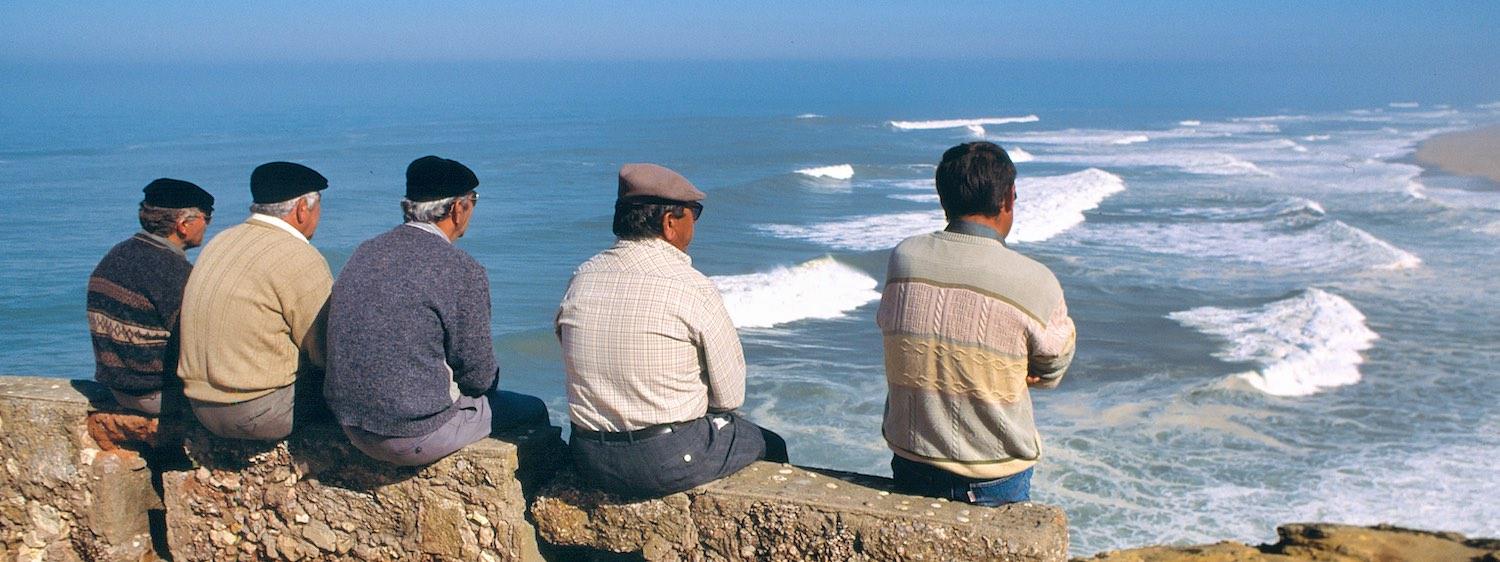
Nazaré
From Coimbra, we decide to continue our trip south along the coast. Inland lovers can instead follow the N2 - also known as Portugal's "Route 66.
Nazaré is famous for its monstrous waves. It's not for nothing that it has the highest waves in the world. Normally, waves are slowed down by the decreasing depth of the seabed, but this is not the case at Nazaré. Off the coast is a very large undersea ravine that measures 5 km at its deepest. So the waves are given free rein here until they suddenly encounter shallow water off the coast. Gigantic masses of water are thus pushed upwards. You can see this impressive phenomenon especially between October and March because of the storms at sea. In summer, Nazaré is a rather quiet fishing village.
We need not explain further, the village is a true surfers' paradise. For years Nazaré has been the place for many surfing events. Repeatedly, a Guinness World Record also emerges from it. In the iconic Praia do Norte lighthouse, you can visit the surf museum. For just a few euros, you can view the boards, wetsuits and videos of the daredevils who once surfed these giant waves. So, not for beginners…
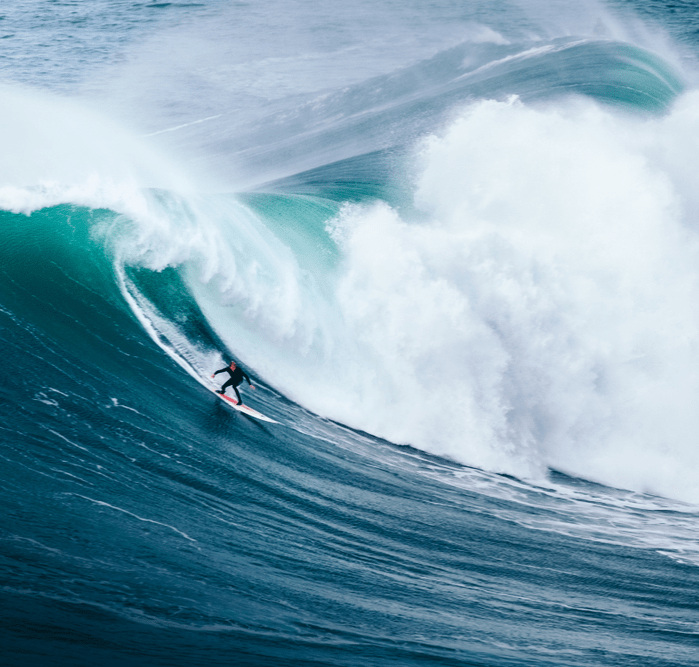
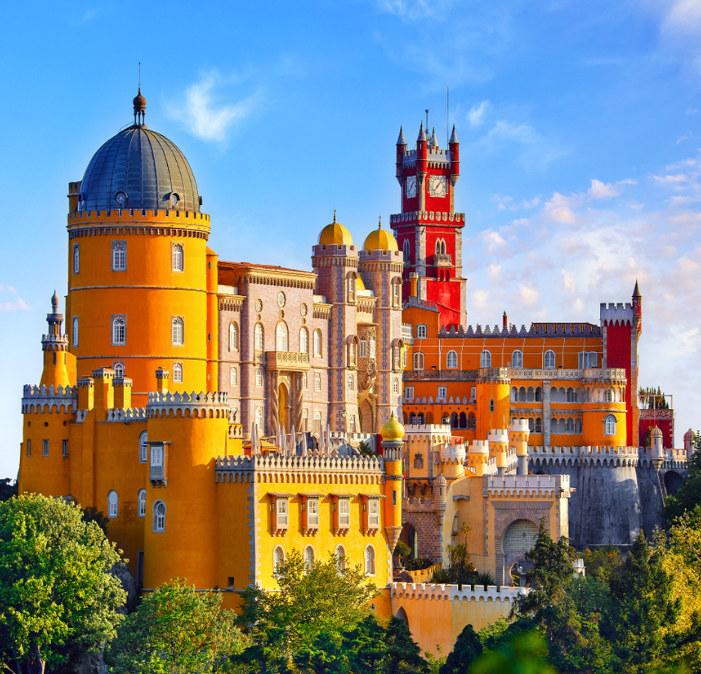
Sintra
Our next big stop is Sintra. This fairy-tale town is not far from Lisbon and is impossible to miss. However, everyone thinks so, so be prepared for some serious hustle and bustle. Sintra has a beautiful old town filled with castles, palaces and mansions amidst the most beautiful gardens and parks. One of the must sees is Palácio Nacional da Pena. The romantic palace and former convent from the 19th century has been one of the Seven Wonders of Portugal for a few years now. This brightly coloured palace stands on a high rock and can be seen rising above the mountains from all over Sintra. It is surrounded by a park where you can certainly spend some hours. One important tip: the streets in Sintra are very narrow and steep, so don't drive too far into the centre with your campervan or car.
After Sintra, we explore the surroundings and drive through the National Park Sintra-Cascais. Not far from Sintra is the Praia da Ursa beach. It is a short walk from the parking place, but it is certainly worthwhile to take a rest on the beach.
Before entering Lisbon, we go to Cascais, one of the best (wind) surf spots of surfing paradise Portugal. It is rather for windsurfers with some experience. But also apart from surfing, it is a great place with a nice hippy vibe. The food is delicious and you can totally relax on the beautiful beaches.
Lisbon
Lisbon is the capital and largest city of Portugal. There are many tourist attractions that will keep you busy for hours. We liked to be guided by the city itself. Lisbon is a very diverse city and each district has its own character. From a practical point of view, it is recommended to park your camper at the (pricey) city campsite. Although you are not allowed to park along the Tagus with your camper, it is done. The symbol of Portugal's prosperity and power - Torre de Belém - could not be missed. The tower is built in the Manueline style, a late Gothic style only found in Portugal. The tower was built as a defence tower in the period of the discovery journeys. But it also served as a ceremonial gateway for returning ships. Not far from the tower, you will find the Hieronymite monastery where you can visit the tomb of the famous explorer Vasco de Gama. Be sure to try the famous Portuguese pastries pasteis de nata.



Alentejo
After Lisbon, we leave the big cities and follow the west coast of Alentejo. It is a beautiful region that lends itself to a nice road trip. So, be sure to take the time to move from beach to beach and admire the rugged coastline. We stop every now and then at beautiful little bays. Porto Covo, for example, is such a place with nice beaches where you can also take very nice walks. If you walk along the Almograve coast between April and June, there is a big chance that you will see breeding storks. Just north of Aljezur is Praia da Amoreira. The beach has an extensive stretch of sand and is surrounded by dunes. In the north, the beach is bordered by a dark rock that according to the locals resembles a giant lying down. We leave the west coast and continue our route to the more touristic south of the Algarve.
Sagres
The southern part of the Algarve is a popular holiday destination, and that is not surprising. When we drive into Sagres, we are silent for a moment. On the tip of Europe, we listen to the screeching seagulls and the wild waves crashing against the rocks. The town lies on the bay of the same name and close to the most south-westerly point of mainland Europe: Cabo de São Vicente. The lighthouse seems to mark the end of the world. The lighthouse used to be a monastery where the monks warned the ships at sea of danger. Sagres itself is a somewhat mystical fishing village. The name also honours this mysticism: Sagres is derived from 'sagrado' which means holy. In the harbour, the hard-working fishermen are constantly busy. This also means that you don't have to look far to find the specialities of the local cuisine: sea snails and mussels. At the harbour, you can also go on a boat trip to spot dolphins.
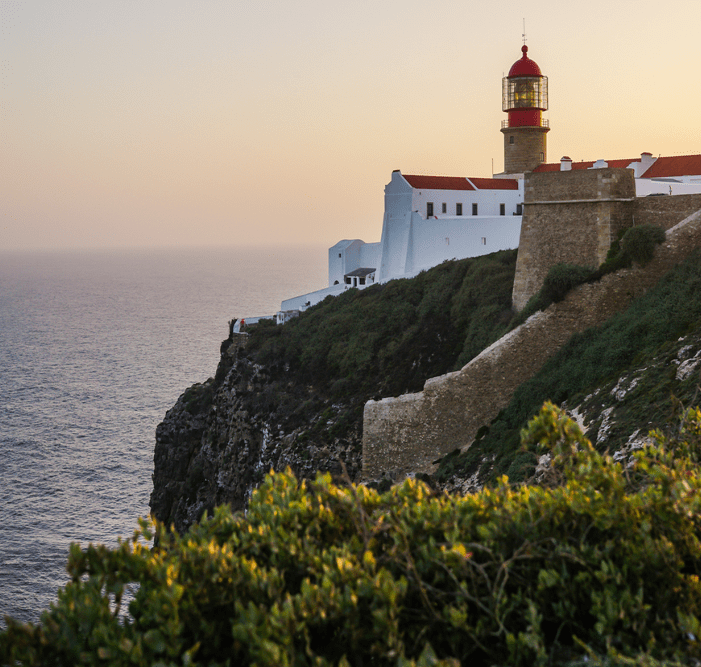
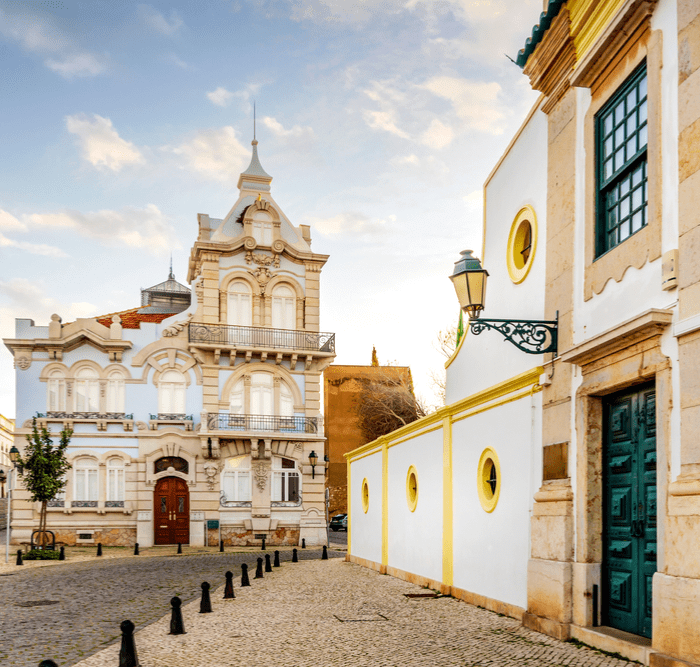
Lagos and Faro
From the authentic Sagres, we drive further to Lagos. The town is located west of the famous Albufeira and is a chain of cobbled streets, picturesque squares and beautiful churches. Lagos is one of the oldest cities in the area. Some sources date the city to 2000 B.C. Lagos was also the central point for many voyages of discovery. Numerous events are organised in the old city centre. Enjoy a nice terrace and stroll along the colourful houses. The most beautiful building in Lagos is without doubt the Igreja de Santo Antonio. The white towers of the church are visible from afar. The church dates back to the 17th century and is one of the few buildings to survive the 1755 earthquake. The earthquake destroyed most of the city. The square Prace do Infanto was the former slave market where slaves from Africa were sold for the first time in Europe. We end our route in Faro, for many the gateway to the Algarve, for us the final destination. Faro has a beautiful historic centre and is very idyllic. The perfect stop to end our road trip.

